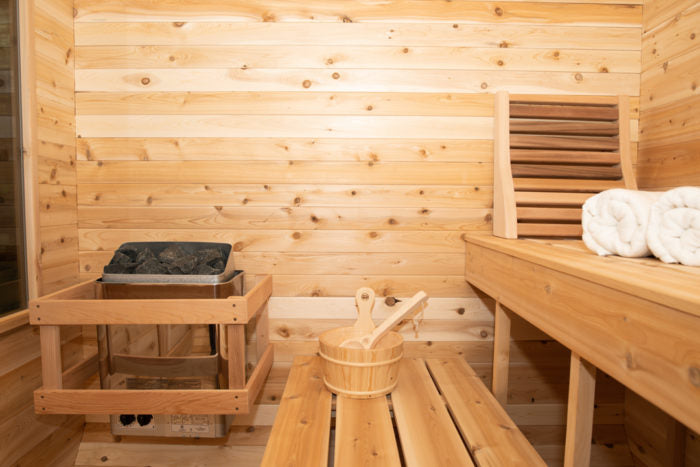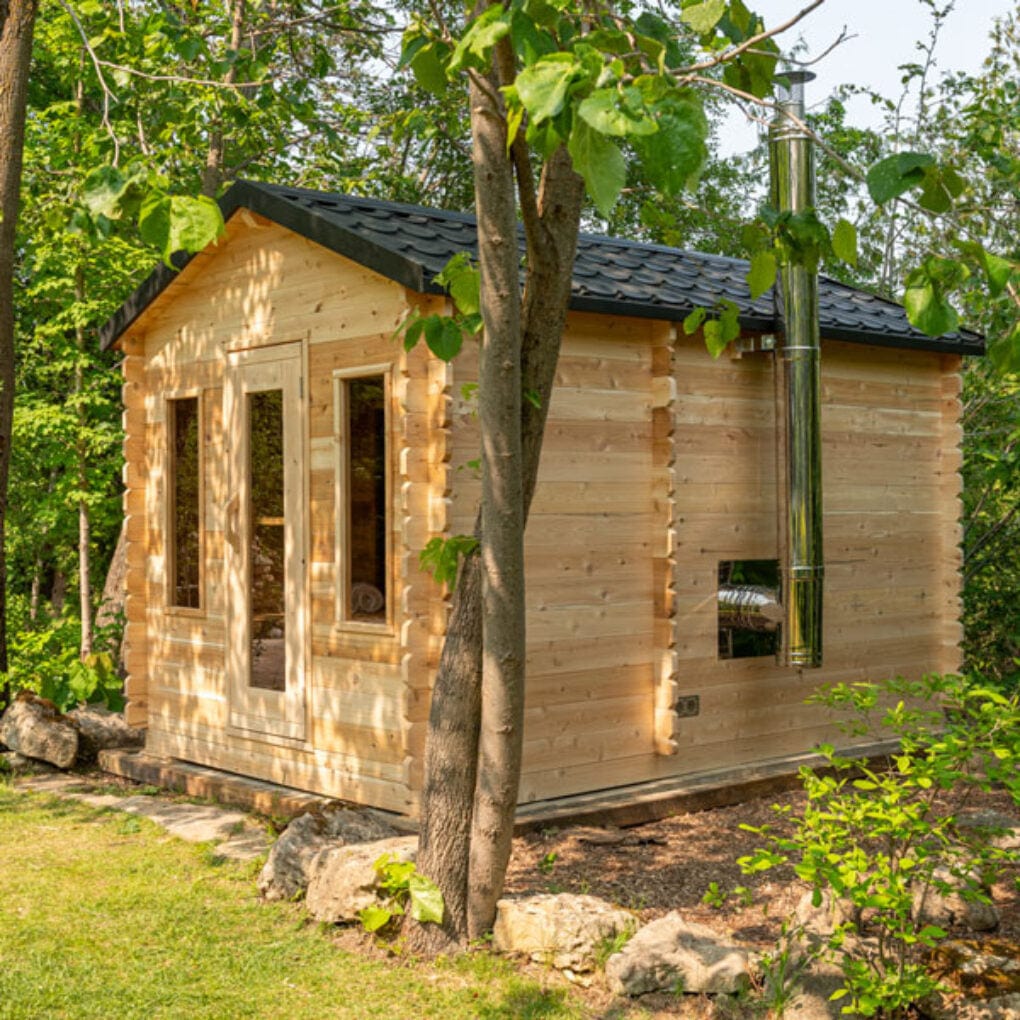Things about Traditional Sauna
Things about Traditional Sauna
Blog Article
Traditional Sauna Things To Know Before You Buy
Table of Contents8 Simple Techniques For Traditional Sauna5 Easy Facts About Traditional Sauna Shown9 Easy Facts About Traditional Sauna ShownThe smart Trick of Traditional Sauna That Nobody is Discussing
Many of the weight lost in a sauna is water loss and is re-gained upon rehydrating. Nevertheless, undeniably sauna can be a vital part of a healthy weight management program. To take a look at the distinctions between standard and IR saunas, I will certainly divide these into proven, theoretical, and produced differences.Thus, the most popular factor in the saunawhich is at the ceiling straight above the sauna heateris commonly in between 185 and 190 F. Traditional Sauna. Claims that a traditional sauna exceeds 200 F is simply not true and not applicable for electrical saunas marketed in the United States. The temperature for a far-infrared sauna is typically set between 120 and 140 F; however, unlike the traditional sauna, the goal in and IR room is not to attain a high temperature
Since of this, the temperature difference is nearly pointless, given that excessive sweating leads to both sauna kinds, but the method of heating up the body is various. In an IR sauna the bather will feel hot and will sweat a lot, but at much lower temperature levels. Hence, if the goal is to spend longer durations of time in the sauna, the IR sauna is a great option.

7 Simple Techniques For Traditional Sauna
When the heat is attained, the aspects cycle on and off to keep the heat. The majority of typical sauna users take pleasure in pouring water over the rocks to create vapor to raise sauna humidity degrees. The benefits of pouring water over the rocks consist of: making the room more comfortable, moistening the nasal passages, and permitting the use of aromatherapy by blending essential oils with the water.
In a far-infrared sauna, the warmth waves permeate the body to effectively heat the body and raise the body core temperature level. To achieve this raised temperature level, Far-infrared emitters develop infrared energy which is close to the exact same wavelength as that which the body normally emitsoften described as the "Vital Range" of 7 to 14 microns), so the energy is well obtained by the body.
When the energy goes into the body, it creates the body temperature level to increase and inevitably results in sweating. In an infrared sauna it is necessary for the emitters/heaters to remain on almost regularly. Since there is no mass of rocks to keep heat, the sauna will certainly cool down if the emitters shut off.
As pointed out above, the sauna bather in an infrared area wants to place himself before operating emitters to obtain maximum take advantage of the warm. The home heating time for the 2 spaces can be very different, relying on how the spaces are used. For a typical sauna, a bather needs to permit 30-40 mins for the space to accomplish a desired temperature level and to correctly pre-heat the rocks.
Not known Details About Traditional Sauna
A well created sauna will generally achieve a temperature of 150-160 F in about 30-40 mins (Traditional Sauna). For hotter temperatures, the area may need to heat for a longer period. When the area attains established temperature, the heating system will certainly cycle on and off, commonly running concerning 50% of More hints the moment. The protected walls and the warmed rocks will certainly keep the room warm and at secure temperature levels.
To some, 15 minutes was "lost" while the infrared power heated up the wood panels rather than warming a body, while others locate a pre-heated room to be a lot more comfy and think a raised starting temperature level is necessary to start sweating. The length of advised use for each and every space is approximately the exact same (10-15 minutes per session); nonetheless, because of the lower air temperatures and the capability to really feel the impacts of infrared heat quicker than a standard sauna, it is not unusual for an individual to invest an overall of 20-30 minutes in an infrared sauna.
Traditional saunas tend to be larger (for this reason use even more electricity) than infrared saunas, although standard saunas are certainly readily available in one and two person sizes also. For a two-person standard sauna, 5x6 or 5x7 size is most preferred. The top bench can conveniently seat 2 or 3 people and is also long sufficient to rest during the sauna session.


The average cost per kWH of electricity in the united state is around $0.11, so a 4.5 kW heating system will cost roughly $.50 to run for one hour, if the heating system runs continuously for one hour. Normally a sauna heater will run for 75% of the very first hour and 50% of succeeding hours wikipedia reference on given that the aspects cycle once the set temperature is achieved.
Some Known Incorrect Statements About Traditional Sauna
A 2 person far-infrared room is generally physically smaller sized than a traditional sauna, commonly regarding 4' x 4' or smaller. The IR heater is usually 1.5-1.7 kW making use of a 120 volt 15 amp plug-in solution. Considering that the space can be used earlier than a sauna room, we will certainly think the area is made use of for to of an hour consisting of warmth up time.
Lastly, there is a seldom gone over distinction in the social experience in between the 2 rooms. While our culture has lost some of the social advantage of the conventional sauna experience, it can be really socially fulfilling. From family members time in the sauna, to heart-felt discussions with great site substantial others, to sauna partiesthe traditional sauna experience can lead to intimate interacting socially.
Many greater end infrared areas include colored light treatment, noise systems and full-glass fronts.
Report this page